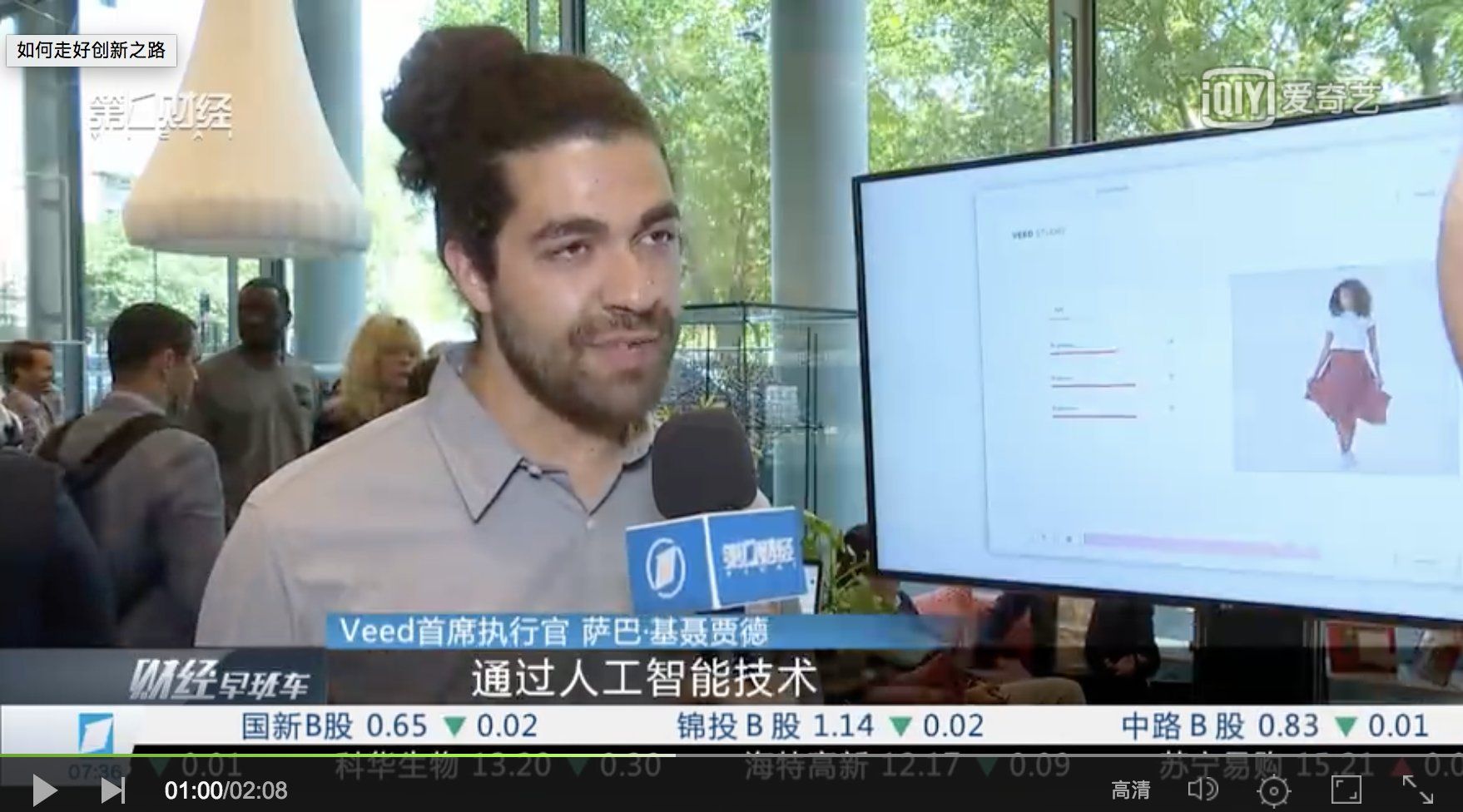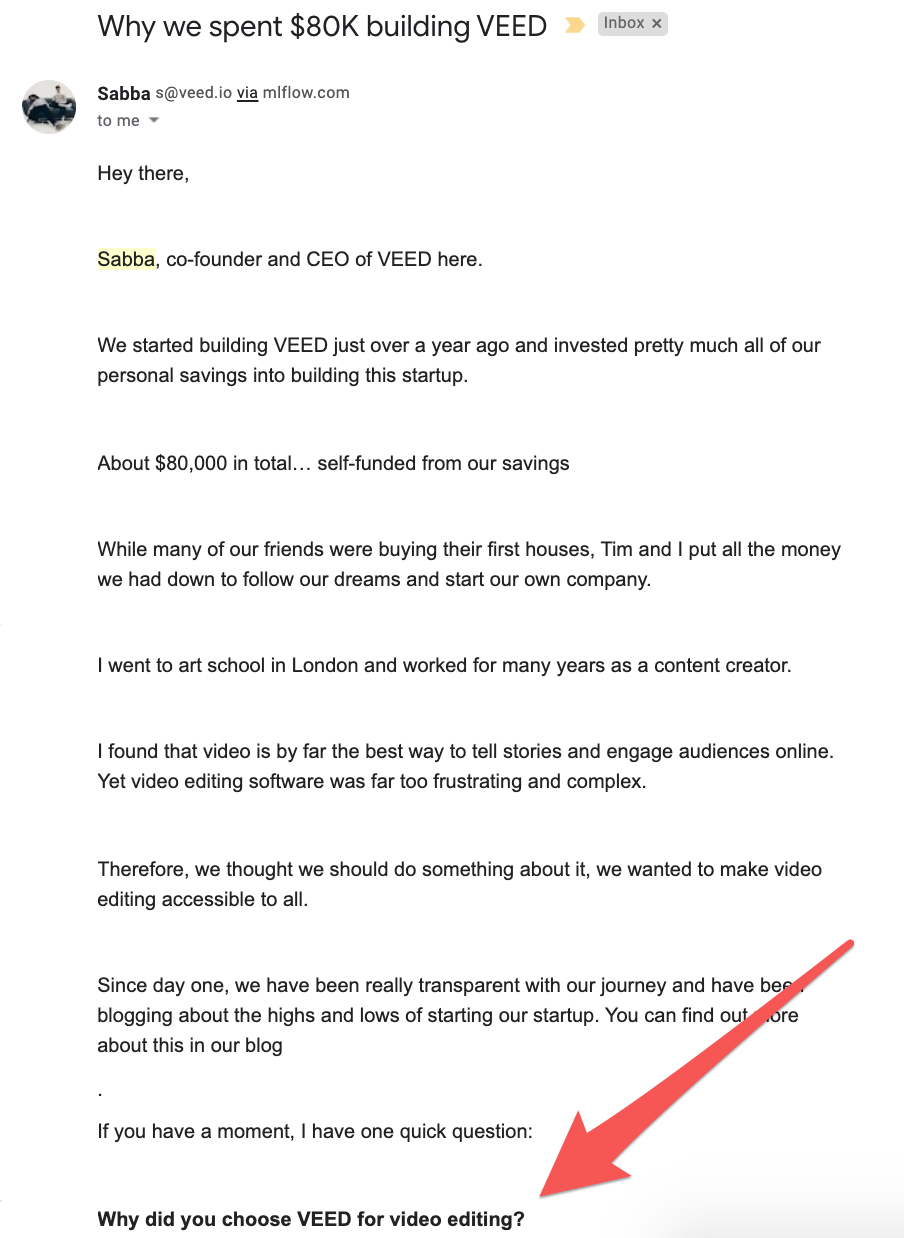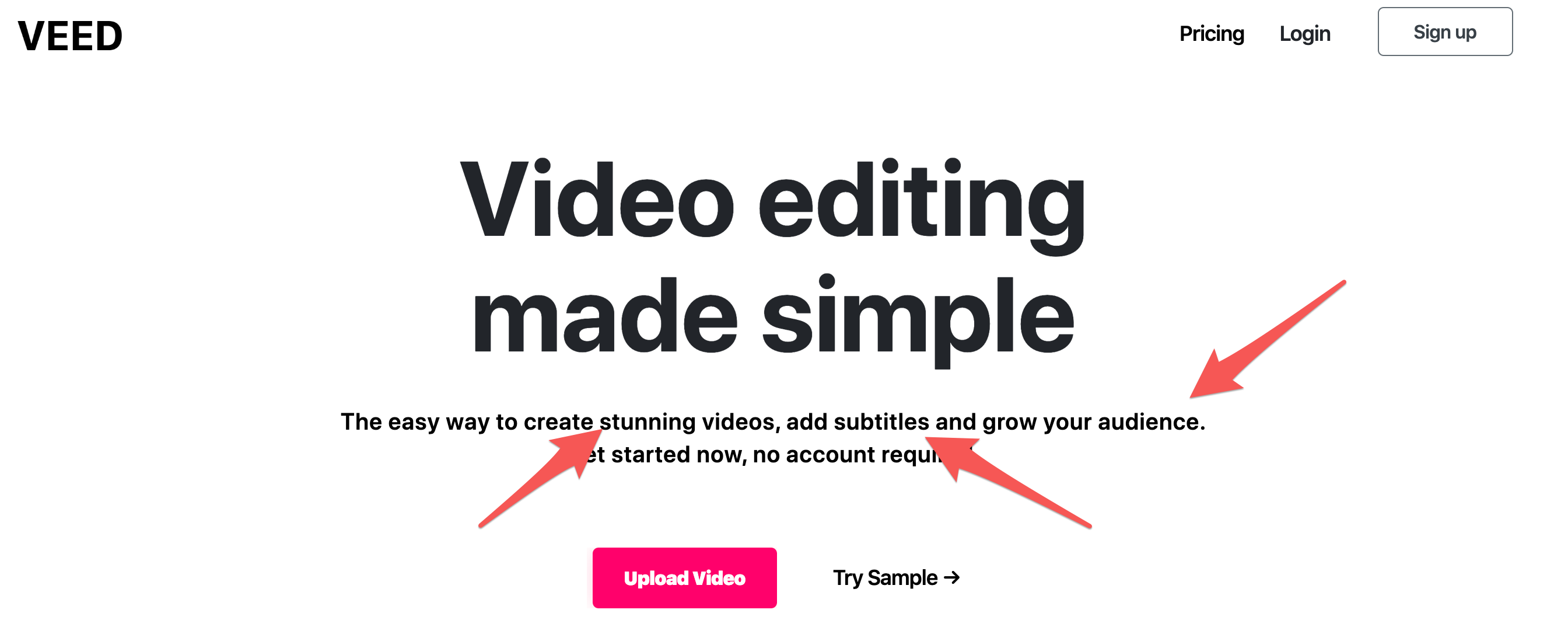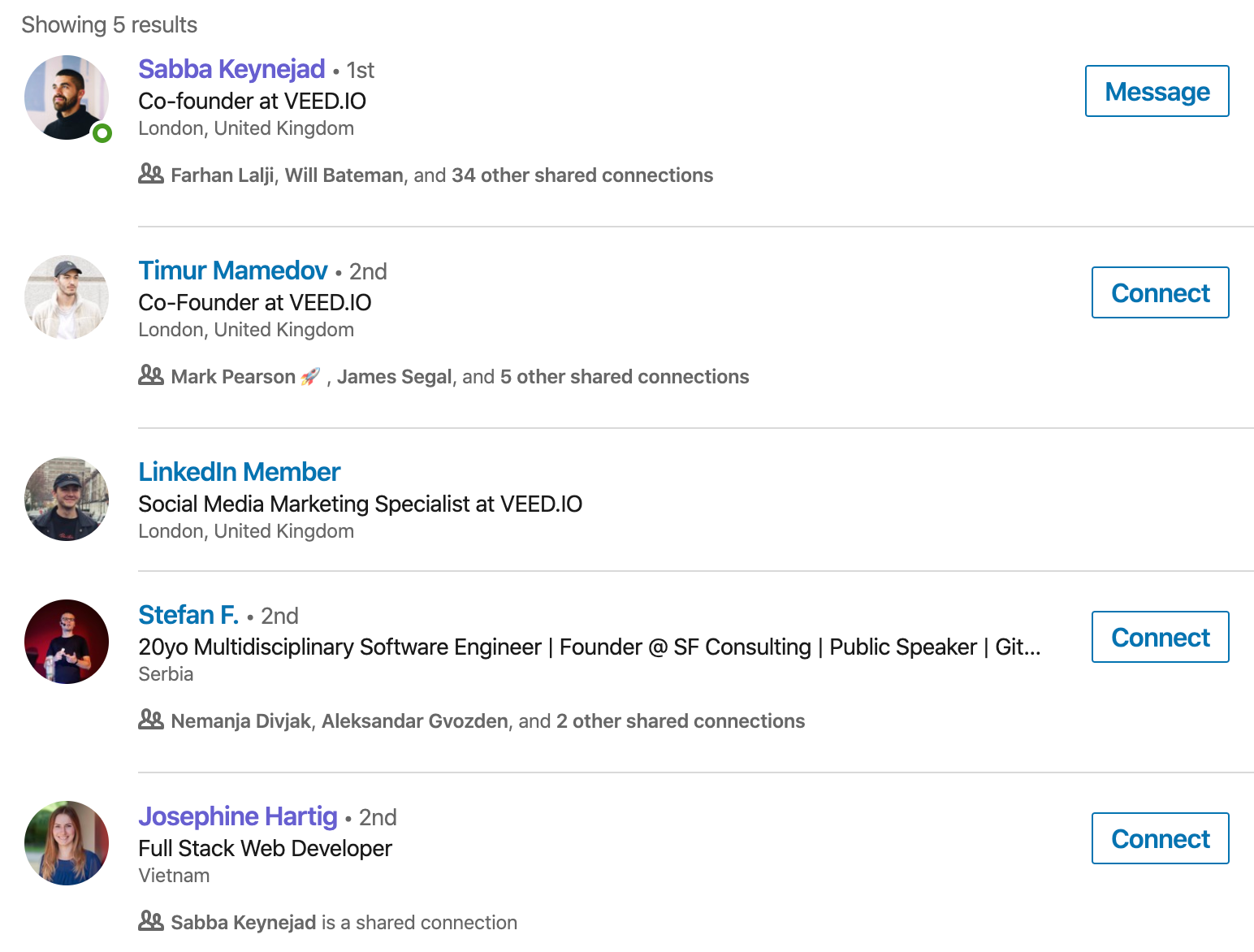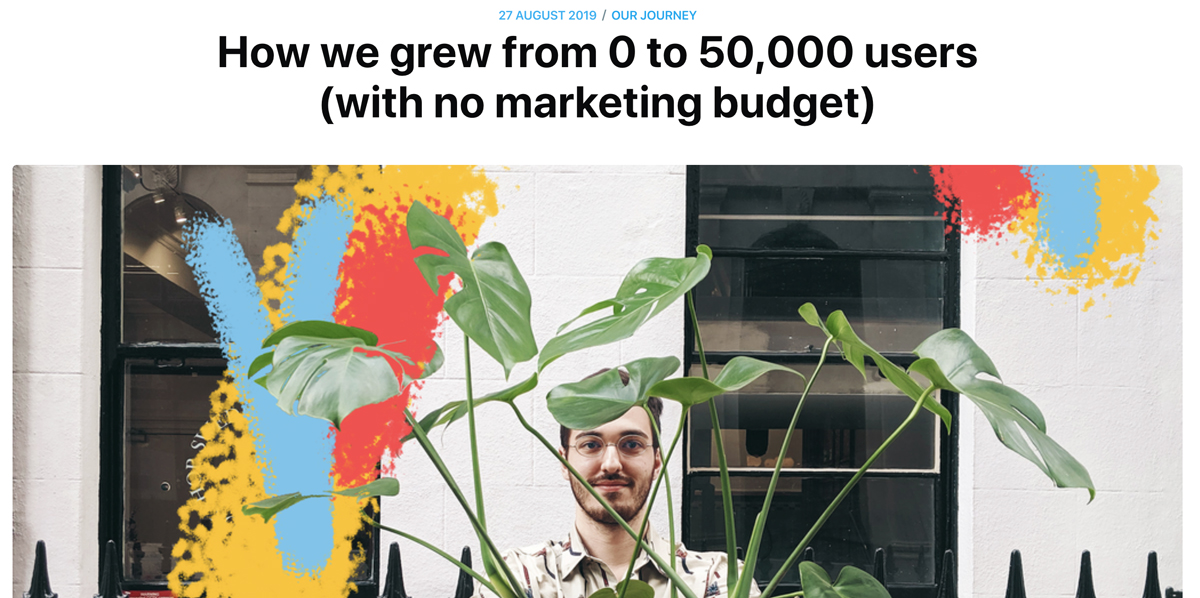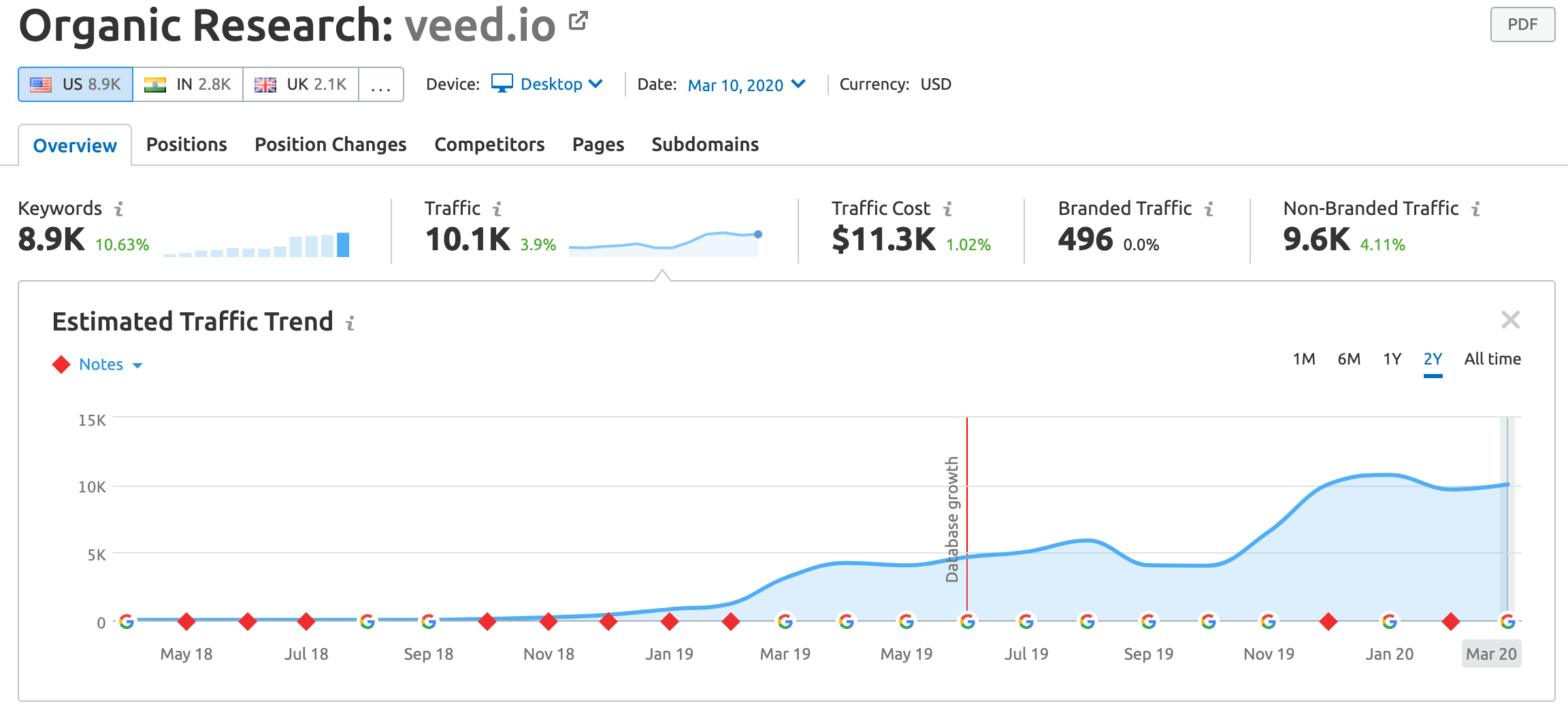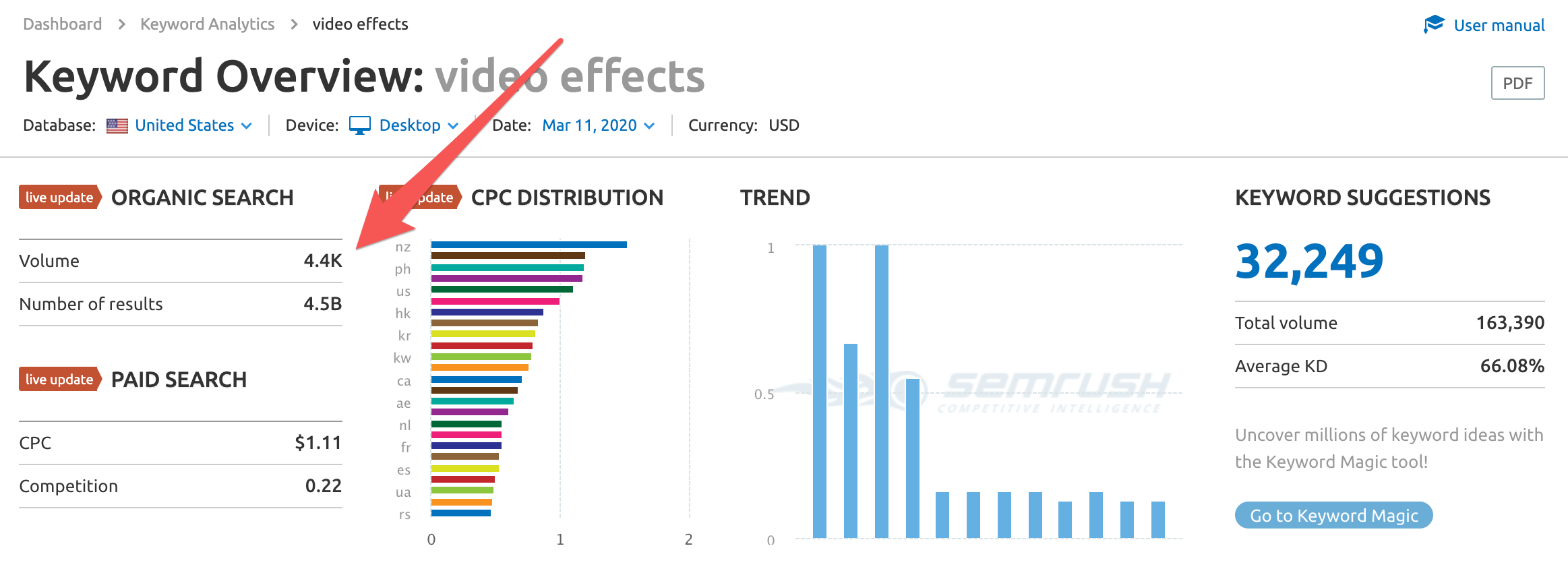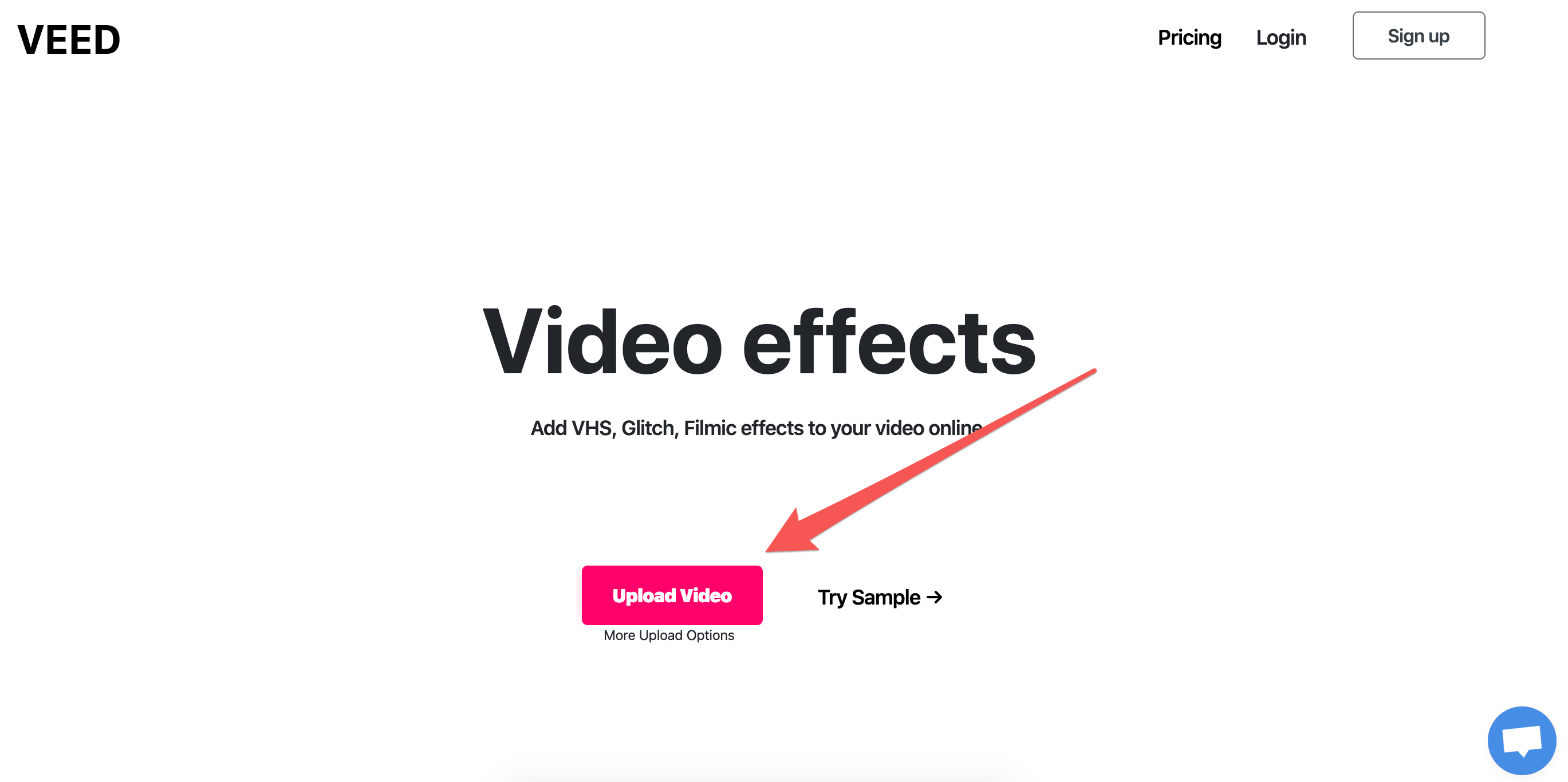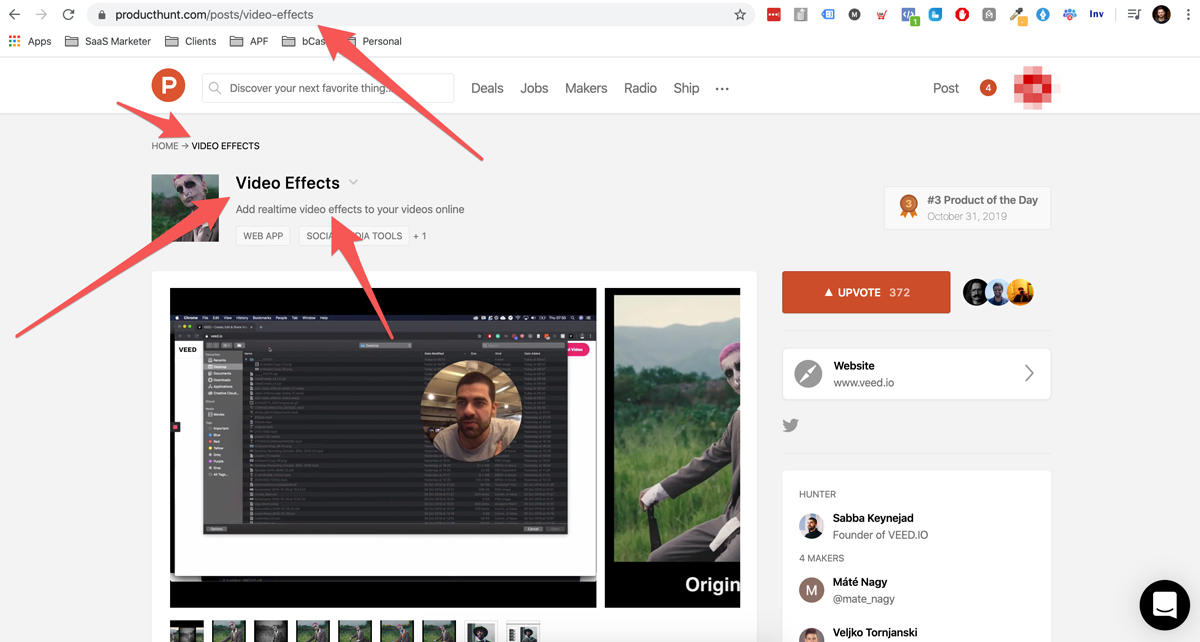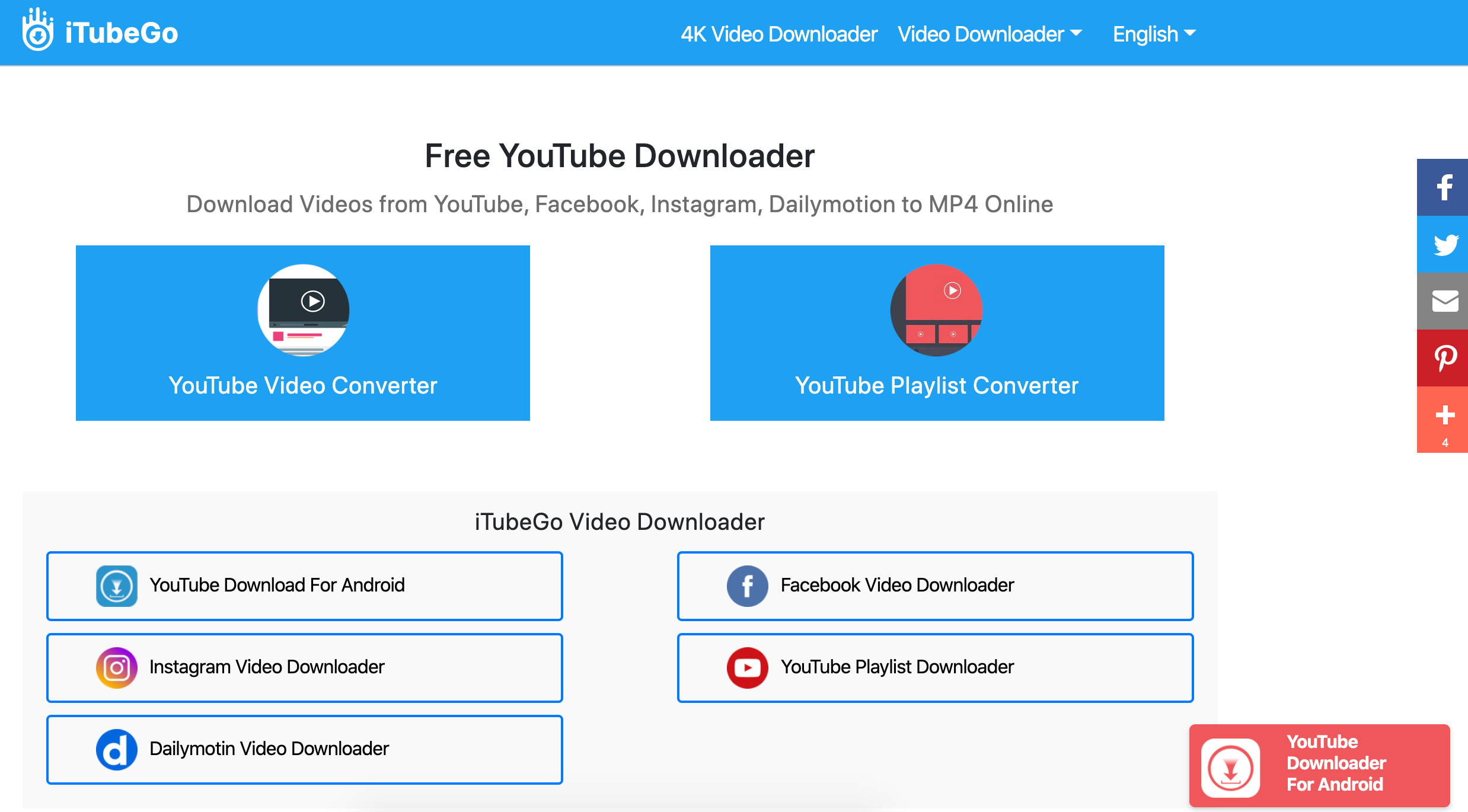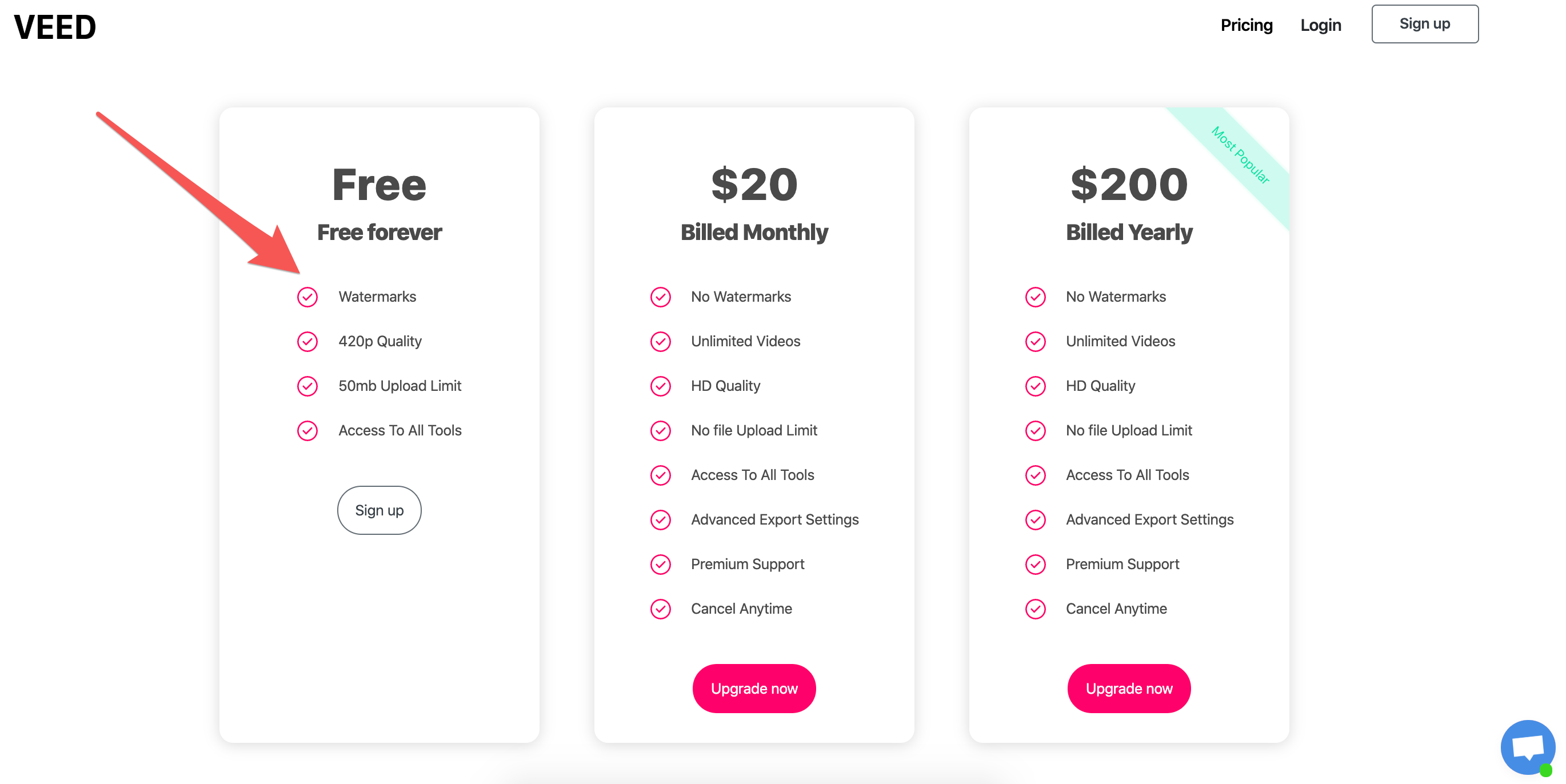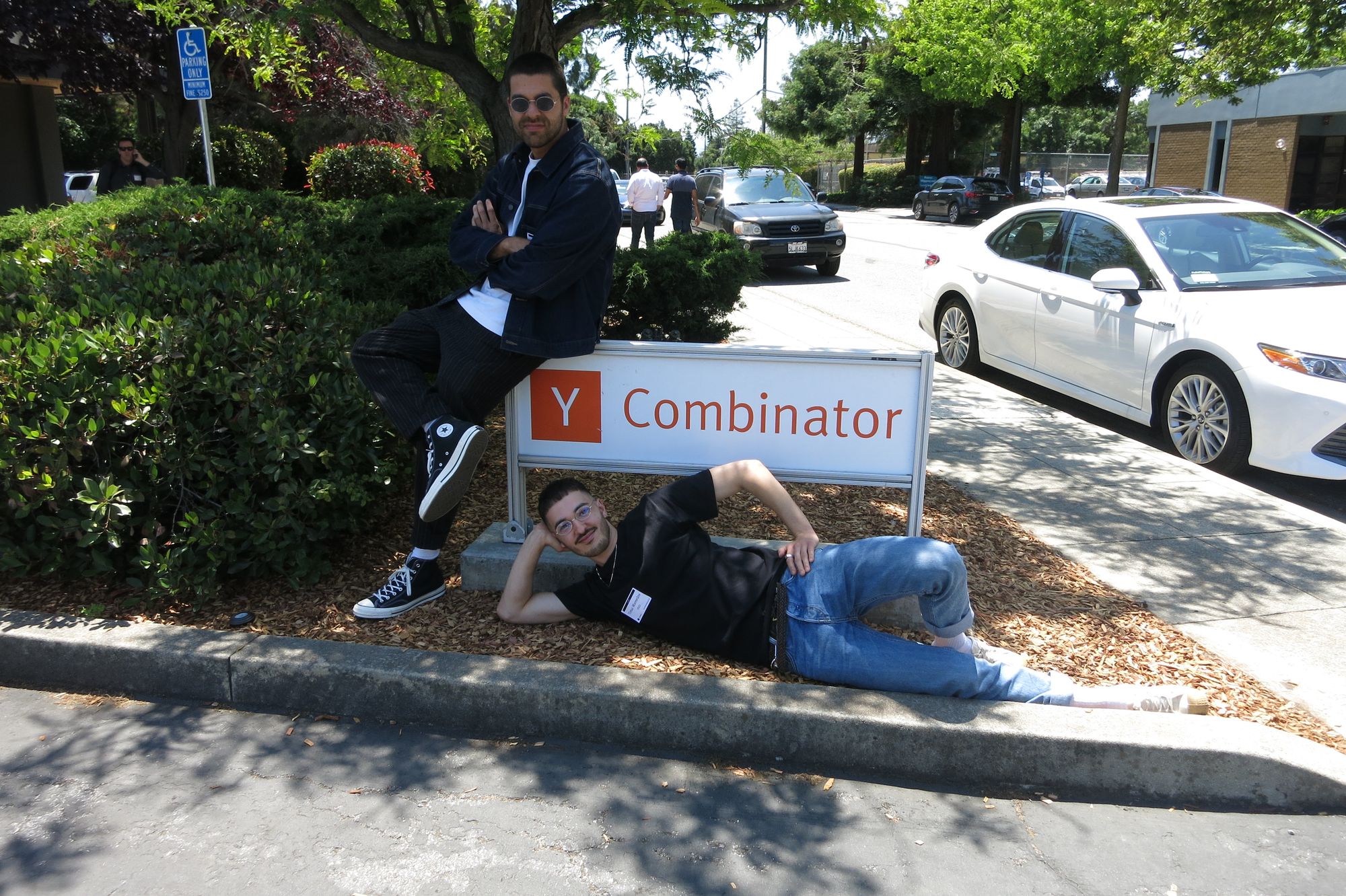Sabba and Tim like to have pints together.
They’ve been doing this since they first met at a hackathon in 2014.

Except this time it’s different…
It’s now Feb 2020 and the VEED boiz have been on a rollercoaster ride through the startup world over the past six years.
“So what do you guys do�?, says some guy they’ve just met
“We make online Video editing software�?, Sabba responds
“I use one called VEED�?
“NO WAY, we made it!�?
“Im one of your users!�?
Sabba jumps on his phone to check Stripe:
This is a big milestone.
You see, it wasn’t always like this…
VEED has been through six different product iterations, rejected by YC, attacked by hackers and the founders forced back into contracting to pay the bills.
And now their bootstrapped SaaS just hit the $1k day mark:
How did they do it?
This post explains…
In December of last year, I sat down with VEED founders: Tim & Sabba to try to decode how they have got to where they are: rapidly approaching $1m ARR.
So take a seat, grab a strong black coffee and strap yourself in for one of the most open and transparent bootstrapped SaaS growth stories of our time.
Growth Lever 1 – Product Iteration
To get to the point where we can even start discussing how VEED are growing, we must first understand how Tim & Sabba met and then churned through a whole host of different startup ideas before eventually settling on an online video editor.
As we know, Tim & Sabba met at a hackathon event in London back in 2014, and…
“We both seemed pretty normal, we were able to socialise and didn’t smell…�?
Tim was studying computer science at Kings College in London and Sabba just started as a “creative technologist�? in a creative agency.
Their first project was a mobile app agency where they would use Sabba’s design skills and Tim’s coding skills to develop independent apps.
This generated a few thousand in revenue and they ultimately sold one app for $5,000.
This takes us up to 2017, and Tim is about to go back to university for his final year… Sabba notices a trend in his work as a freelance designer.
He’s working for a marketing agency and is placed at Google. He’s getting paid £400 per day to add text to videos.
Yep, that’s right. Sabba is working for the worlds most prestigious technology company, getting paid per day, more than most people in the world earn in a month… to add text to videos.
“Something isn’t right here…�?
Thought Sabba.
Coincidentally, Tim’s final year university project focussed on building an AI powered automated video editing tool that would convert a written article into a video, it was called “VEED�?.
And at the same time Sabba was creating GIF’s using Giphy’s online video editor.
These three ideas collided and that was enough to convince Tim and Sabba that there could be an opportunity here.
Sabba started designing, Tim started coding and they won a place on a twelve month startup accelerator at Kings College London.
At this point, they each had approx. £6,000 in the bank – which would need to last the majority of the year, if they weren’t to take external funding.
£500 per month to cover living costs may work in some areas of the world… but not London. So they decided to take funding through either equity investment or grants through competitions.
However, both of these routes preferred a sexier product with a greater, ultimate exit value than a mere self service, online video editor.
So the team ended up pivoting to an AI powered, video creation tool for eCom product videos, you know the videos you may see on ASOS product pages?
Investors and competition judges liked this much more.
Sabba flew around the world pitching… and winning various startup competitions:
Sabba pitching in the middle east
Sabba pitching in europe
Sabba pitching in China
And brought in a total of £40k in prize money during the twelve month period.
Sounds great right?
Well actually, there was one big problem: no one wanted to buy the product.
Investors and competition judges liked it, but customers didn’t.
It’s now August 2018 and the VEED team have one month of runway left, they give up the dream of raising money and decide to pivot away from the AI powered video creator for eCom stores. They rip out the online video editing part of the tool and launch it on Product Hunt.
VEED as we know it today is born.
This story continues in Growth Lever 10…
But for now, I share this elongated product iteration process to illustrate the point that it may take time to achieve “founder <> idea�? fit. But when you do… it’s time to get your head down and execute, just like Tim and Sabba have done.
It took them almost four years to decide to focus on the product that we now know as VEED, but it was worth it.
As Sabba mentioned in a recent podcast interview:
“We were the perfect team to do this. This is what drives us forward…�?
Growth Lever 2 – Obsessive Customer Interviews
Sabba spends up to five hours per day just talking to customers.
How does he manage to do this when most bootstrapped SaaS founders fail to attend one customer call per week?
Well first…
- He knows that the gold does not sit within his or Tim’s mind… it sits within the mind of the customer.
- He knows that he can’t possibly build a product people love if he doesn’t understand them.
- He knows a competitor will launch a much needed feature before VEED if he doesn’t have his finger on the pulse
And second:
Intelligent emailing.
Here is the first email you receive when you sign up for a VEED trial:
You’re hot, you’re interested… you get an email from the CEO asking to help you solve the problem you are trying to solve with the product. Obviously you are going to take him up on the offer.
Sabba is not asking: “Hey, please can I ask you a load of boring questions so you can help me build my business?�?
I expect this email converts through to an onboarding call at a higher % than most email click through rates.
Sabba currently has 15-20 onboarding call each and every week, on any given hour he’s in someone in house in Nigeria then talking to a married couple in Scandinavia.
As well as building relationships and reducing churn with these calls, Sabba is feeding back all this valuable information into the product roadmap that Tim and the rest of the development team are attacking each day.
Whilst we’re on the topic of onboarding emails: number two is also a bootstrapped SaaS Marketer’s wet dream:
First, we’re tapping into some deep influence by suggesting to someone that they are going to get $80k worth of value from a $20 per month subscription.
And second, we have one clear CTA for a nugget of copywriting gold.
Yep, Sabba can take almost word for word what he receives from customers in answer to this question and then can add this copy onto the site to improve conversion:
LEARNING: Add a link to a 15 minute onboarding call into your first email to all new free or paid users…
Growth Lever 3 – An Honest & Open Founder Relationship
I normally like to only include hard, actionable strategies in these case studies as this is the feedback I get from the community.
But here’s a fluffy one that you won’t see a load of GrowthHackers posts breaking down…
As I sat down with Sabba and Tim, listening to their story, it became clear that in order for two founders to embark upon the journey that VEED has been on, their relationship must have experienced great strain.
One of the most common reasons for startup failure, is a breakdown of the cofounder relationship.
So I had to ask:
“Why do you think that your relationship with Tim has been able to withstand the brutal journey?�?
Sabba’s answer was instant:
“We deal with problems straight away with honest communication.�?
Instead of letting issues fester… Tim and Sabba communicate regularly to ensure that any challenges are dealt with immediately.
This communication strategy became particularly valuable when they first started building VEED due to each person “poking their nose�? into the other person’s area.
They have since segregated responsibilities:
- Sabba – Growth and design
- Tim – Tech and product
These clear lines of responsibility, along with regular, open and honest communication allow Tim and Sabbe to focus less on cofounder issues and more time on building an awesome business.
LEARNING: Assign clear roles and responsibilities within the cofounder team and set aside time for regular, open and honest communication.
Growth Lever 4 – Founder Led Support
Here are VEED’s five employees as of March 2020:
I see three technical resources and two design/growth.
I’ll tell you what I can’t see…
A customer support rep.
Why?
The reason is simple.
VEED are only going to be able to build an insanely good product if they know what is going right or wrong for their customers. And the most effective way for them to know this is for the founders to be the people driving customer support.
LEARNING: Until it’s really painful, you… as a founder should be the customer support person.
Growth Lever 5 – Transparency
I’ve spoken with A LOT of bootstrapped SaaS founders about growth over the past three months… and one of the biggest challenges I observe is the ability to create valuable engaging content.
Not just any content… as you can pay an outsourced team a few dollars per article to churn out posts that no one will ever read (apart from Google’s crawler just before it banishes them to the depths of the internet).
No, I’m talking about hard hitting posts that your audience actually miss if you don’t produce it.
The type of content you get emails and comments asking about when the next post is dropping.
Now, in order for a SaaS business to produce this content, you need:
- Writing skills
- Stuff to write about
Writing skills come with practice but number two?
How do you get great stuff to write about?
Well, one approach is just to share what you are currently doing in your business… with your audience.
People are sick and tired of bullsh*t corporate posts that just recycle what page one of Google is saying. People want to see the real people, processes, failures and strategies “behind the mask�?.
Though beware… this only works if there is a crossover between what you can write about and what your ideal customers are interested in.
Take VEED for example, their SaaS can and is used by early stage startups. VEED are an early stage startup, so their insights are valuable to that customer segment.
If VEED only sold exclusively to “stay at home parents�? that wanted to edit videos of their children’s early years… this content would be of little use to that persona, and it would not be worth their time to produce.
What does this look like in real life?
I highly recommend checking out the following two posts. The first outlines VEED’s turbulent journey to ramen profitability:
And the second shares how they grew to 50k users without marketing budget;
LEARNING: If your audience could benefit from learning about what you are doing internally, then why not share?
Growth Lever 6 – Socially Relevant Content
Sabba is a content machine.
Aside from the VEED blog, Sabba also regularly uploads timely relevant content to the VEED Grow blog that helps content creators grow their audience online:
Timely content performs better on social as people like to “keep up with trends�?, this early injection of social traffic helps to rank posts on Google, and over time, this can build an attention generating asset:
Recently, Sabba has stepped away from content creation duties and has passed this socially relevant content framework over to team members/freelancers to continue executing:
This is both a content marketing lesson and an outsourcing lesson: in order to effectively train someone to achieve an end result, you must first execute the process and get the desired end result yourself.
You can then document the process, hand over and train another resource to execute. If Sabba had just found freelancer writers and asked them to “get attention for VEED�?, it would have either failed or he would have to spend a shedload more cash to get a proficient agency to execute the process.
LEARNING: What timely, high value content can you create for your community?
Further Reading: SEMRush: The $100m Black Sheep Of SaaS
Growth Lever 7 – Focussed SEO Efforts
VEED’s organic traffic has scaled from zero to 9k ranking keywords:
And 10k sessions per month in two years:
How do you do this with a bootstrapped budget and limited time?
You use what I am now calling the “Niche & Tight�? strategy:
- Niche – you focus on keywords that have traffic, but not too much traffic
- Tight – you focus on keywords that transition naturally into a free trial (or demo) of your product
How have VEED used this strategy?
Competitive research showed them which keywords competitors were ranking for (SEMRush is the best tool for this), so Sabba set out on a campaign to outrank them.
Let’s follow this strategy for the keyword: “video effects�?:
First things first, he created a simple, interactive landing page with video examples and social proof: https://www.veed.io/video-effects
The important word here is INTERACTIVE.
Google is intelligent enough to know when people actually interact (click, upload, scroll) with your content and will prioritise a page that generates more engagement over one that doesn’t.
This is why VEED allows web page visitors to upload a video there and then to take advantage of the feature:
The page is light, fast loading, very scrollable and has multiple CTA’s (including a scrolling “Sign Up�? button).
Now the page is live… it’s time to drive some traffic.
Google also likes to see relatively new pages generate some social and referral traffic early on. So the VEED team launch these landing pages just like new products… on Product Hunt:
Note the keyword is strategically placed everywhere:
And that the video example is Halloween themed and is launched on October 31st (it’s the little things…):
372 upvotes is more than most products get when launched, let alone just a new feature.
This exposure upon launch will have undoubtedly generated a few of the 692 backlinks pointing back to the landing page:
This post went live on the 31st of October 2019, and by December 5th, they hit #5
And by January 8th, #2:
In summary:
- Choose niche keywords competitors are ranking for
- Build an interactive landing page around this keyword (and a standalone feature if possible)
- Drive social and referral traffic to this landing page shortly after launch
- Hopefully pick up a few backlinks in the process
- RANK
Oh and the VEED team rinse and repeat this strategy with each new feature, here is Sabba’s “Made�? Product Hunt history:
LEARNING: Which of your product features are being searched for right now and do you have specific, interactive landing pages for these?
Growth Lever 8 – “Out Of The Box�? Traffic Sources
Check this message I get from Sabba back in November of last year:
He stumbled onto an untapped traffic source, started paying them $75 per day, and is now getting 881 sessions per hour.
Let’s take a closer look:
He’s placed a banner ad on this site:
And if the traffic converts, it is estimated to 6x their monthly user count from 50k to 600k.
It could be game changing for growth…
At this point, the traffic from the banner ad is being sent to first create an account and then move through to the editor… conversion is not great.
To tweak and improve, Sabba and the team switch the funnel to push the traffic to a video editor before creating an account – showing the product’s value before asking for the micro-commitment.
Despite this change, traffic quality is just not there:
13,525 visitors and zero paid customers.
This time, it didn’t work… but with traffic sources with volume like this: you only need to be right once.
Though beware, the secret with this type of traffic source is to not mention a word to anyone when you find them… as soon as you do, then you waste your advantage as competitors pile in and increase the CPC up to Facebook’s level.
So if you find one… keep it quiet 😉
LEARNING: Which other sites on the internet are getting traffic that you could convert? Reach out to them and try strike a deal…
Growth Lever 9 – User Led Bootstrapped SaaS Growth
Anything you can build to enable users tell other users that they use your product… can have a viral impact on growth. We call this User Led Growth.
Like many other bootstrapped SaaS products, VEED offer a free plan in exchange for those users passing on the message:
Free users cost VEED cash in the form of data storage and bandwidth costs, though they still offer a free plan. They do this as free users can only download videos with a VEED watermark, giving them brand exposure to viewers of these videos, which will inevitably lead to increased conversion to paying customers.
Despite this, Sabba is not convinced of the impact of the watermark on growth:
We’re not actually convinced it did that much…
It makes sense, video watermarks would only lead to increased conversions from branded search traffic – which is hard to track.
LEARNING: Can you split off all or part of your product and give it away for free in exchange for exposure to the user’s network?
Growth Lever 10 – Patience & Persistence
Back to VEED’s origination story…
It’s August 2018, Sabba and Tim have just ripped out the video editing part of their AI-powered, eCom automated video creation tool and launched on Product Hunt.
It brings in a few users, but obviously not enough to sustain Sabba and Tim’s London living costs… so they both go back into contract work (whilst waking up at 5am to work on VEED).
Over the next four months, VEED goes from 10 to 30k monthly users. At this point, they are not charging for the product.
Sabba goes back on the road to raise investment and ends up landing an interview with Y Combinator:
The boiz head to San Francisco, complete the interview and are then walking up the stairs in the Green Tortoise Hotel when they receive the rejection email.
They are rejected for not charging users.
This hurts…
And so over that weekend, Tim and Sabba decide to implement a watermark on all videos produced by free users and then charge $5 per month to remove it.
By Monday they push the update live and receive 20 paid users instantly – they email a proof over to Y Combinator…
Only to be rejected again.
But this one hurt less… as they now have paid users. There is light at the end of the tunnel.
Sabba and Tim return to London and ride the bootstrapped growth wave to ramen profitability by August 2019.
It’s taken the majority of the last five years of their life, but they now have a business that they own 100% of that can sustain their lives… profitably.
The overwhelming theme in this bootstrapped SaaS growth story is that of both patience and persistence.
The lazy SaaS founder/marketer would read the headline of this post and state:
“These guys got lucky, their timing was right�?
But this person misses the point: Sabba and Tim were in the right place at the right time… only because they spent six year preparing.
“We simply know how to take failure and turn it into success and not let it bother us�?
LEARNING: There is a fine line between lunacy and persistence… be on the right side.
And there we have it… 10 growth levers found within one of the most open and transparent bootstrapped SaaS growth stories of our time…
What did we learn?
- It may take awhile, but “founder <> idea�? fit matters so take the time to iterate in order to get there.
- Add a link to a 15-minute onboarding call into your first email to all new free or paid users…
- Assign clear roles and responsibilities within the cofounder team and set aside time for regular, open, and honest communication.
- Until it’s really painful, you… as a founder should be the customer support person.
- If your audience could benefit from learning about what you are doing internally, then why not share?
- What timely, high-value content can you create for your community?
- Which of your product features is being searched for right now and do you have specific, interactive landing pages for these?
- Which other sites on the internet are getting traffic that you could convert? Reach out to them and try to strike a deal…
- Can you split off all or part of your product and give it away for free in exchange for exposure to the user’s network?
- There is a fine line between lunacy and persistence… be on the right side.
Which was your favourite Growth Lever, please leave a comment below…
And be sure to add your email here to receive one of these case studies each week.







